Table of contents:
Key takeaways:
To live stream on YouTube you need to:
- Enable live streaming: Make sure you have a verified account, at least 50 subscribers and no live streaming restrictions.
- Set up your stream: Click on the camera logo on the top left of your home page and then click “Go Live” button to do this. Follow the prompts.
- Go through the livestream settings: Fill in all your live stream details and decide whether it’ll be publicly available.
- Go live: Share your link and then start streaming.
- If you’re using encoder software like Riverside then connect the encoder to YouTube with a Stream key and Stream URL.
Is it your first time hosting a live stream on YouTube?
Connecting with your audience in real time creates a sense of community that prerecorded videos can't match.
Whether you're a gamer, content creator, or musician, all you need to get started is a verified YouTube channel.
We’ll show you how to livestream on YouTube in just 7 easy steps. From meeting the streaming requirements to testing your setup and going live, we’ve got you sorted.
Let's begin!
Table of contents:
- What is YouTube Live?
- How to Live stream to YouTube, Step by Step
- YouTube streaming requirements
- Step 1: Enable live streaming on Youtube
- Step 2: Choose a Sstream type
- Step 3: Create live stream metadata
- Step 4: Set live stream settings
- Step 5: Test your setup
- Step 6: Start Live streaming
- Step 7: Analyze results
- 7 Best practices for using YouTube Live
- Final thoughts
- FAQs on How to Live stream on YouTube
What is YouTube Live?
YouTube Live is a streaming feature that lets you broadcast video content to subscribers and viewers in real time. It's a powerful tool to engage with your audience, whether you're hosting a Q&A session, a live event, or streaming gameplay.
To find live streams, open your YouTube homepage and click the Live tab.
You’ll then see a curated selection of Live streams happening in real-time. Your subscribers can find your live stream on their homepage or in their subscription feed, making it easy for them to tune in.
How to live stream to YouTube, Step by Step
YouTube Streaming Requirements
Before you start live streaming on YouTube, you need to check off the requirements:
- Verified YouTube account: Your channel must be verified. This process may take up to 24 hours, so plan ahead.
- No live streaming restrictions: Ensure there are no live streaming restrictions on your account within the last 90 days.
- Subscribers: For mobile live streaming, you need at least 50 subscribers. Luckily, there's no subscriber minimum for webcam or encoder streaming.
- Tech and software: A webcam, a mobile device, or an encoder to stream live. For the latter, you'll also need streaming software like Riverside or a hardware encoder.
- Costs: YouTube live streaming is generally free. However, you may need to pay for software or hardware when using an encoder.
Step 1: Enable live streaming on Youtube
The first step is enabling the live streaming feature on your YouTube account.
You can do this using different devices:
Note: This section covers the more technical aspect of setting up the lives. We'll cover settings and other features that you can use to enhance your live streaming in detail later.
From a Laptop or Computer
Step 1: Open YouTube and log in to your account.
Step 2: Click on the “Create” icon on the top-right corner.
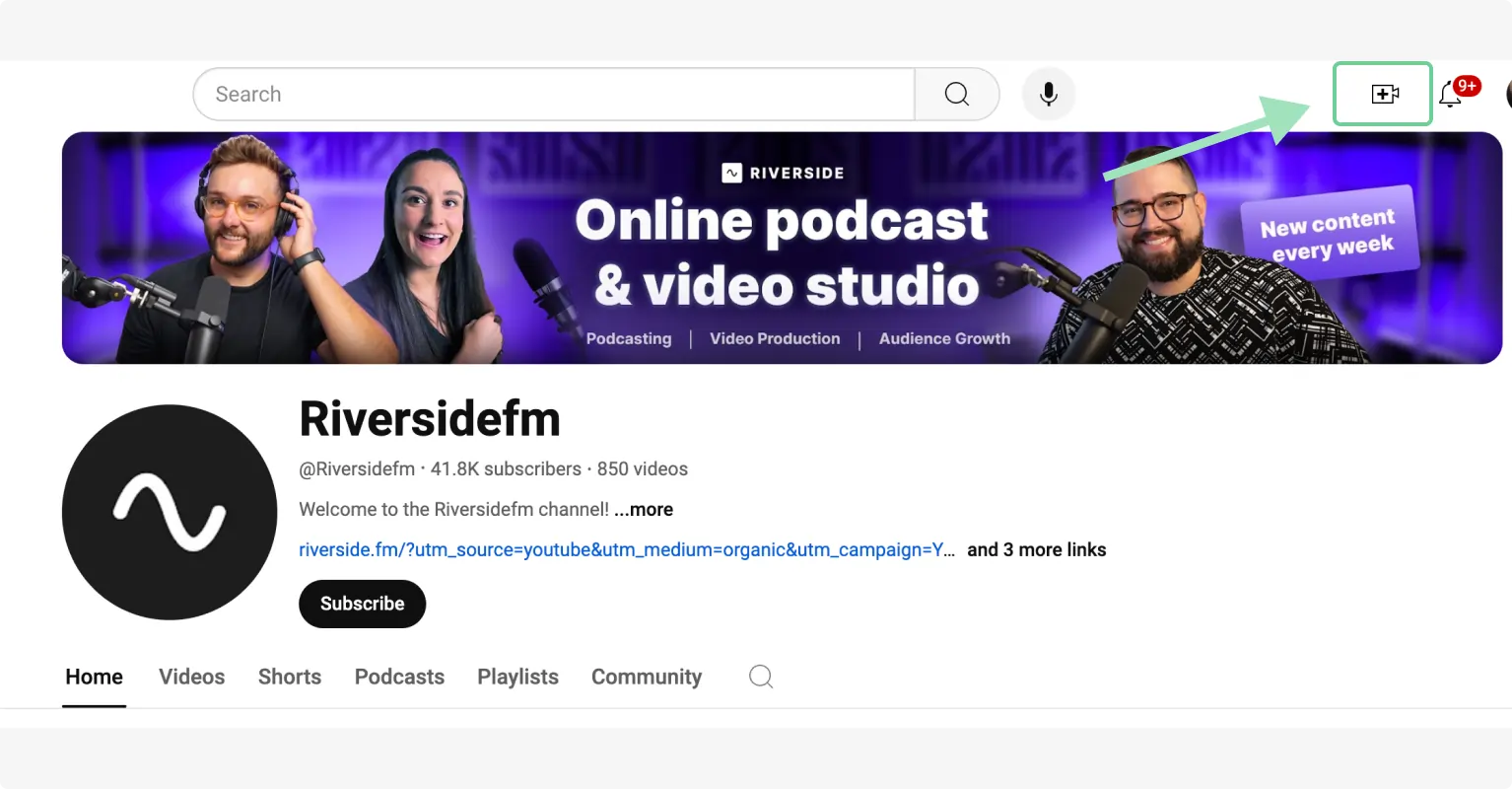
Step 3: From the displayed option, select “Go Live”.
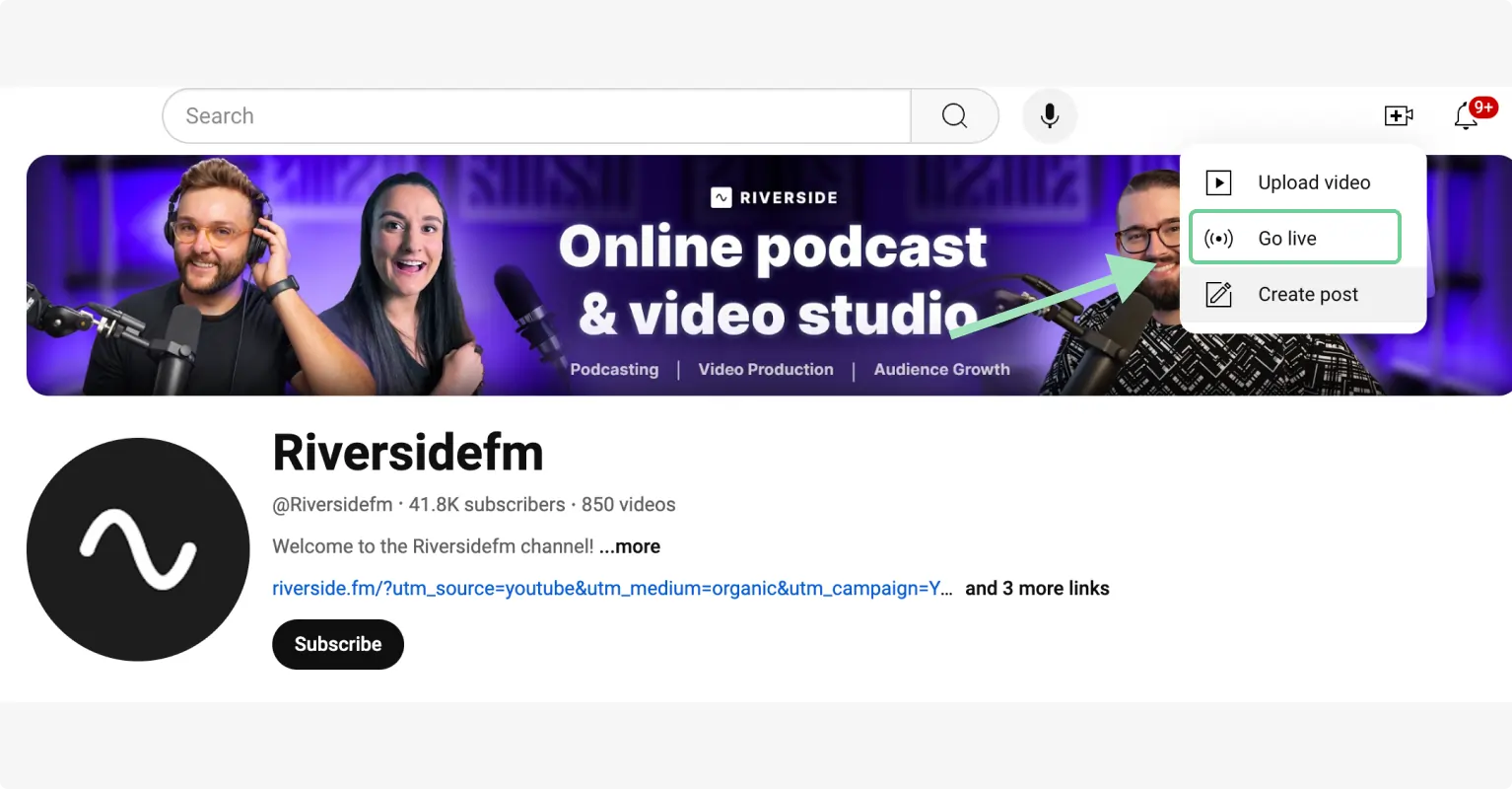
Step 4: Follow the on-screen prompts to enable live streaming.
From a Mobile Device or Tablet
Step 1: Launch the YouTube app on your device.
Step 2: At the bottom of your screen, tap the “+” icon.
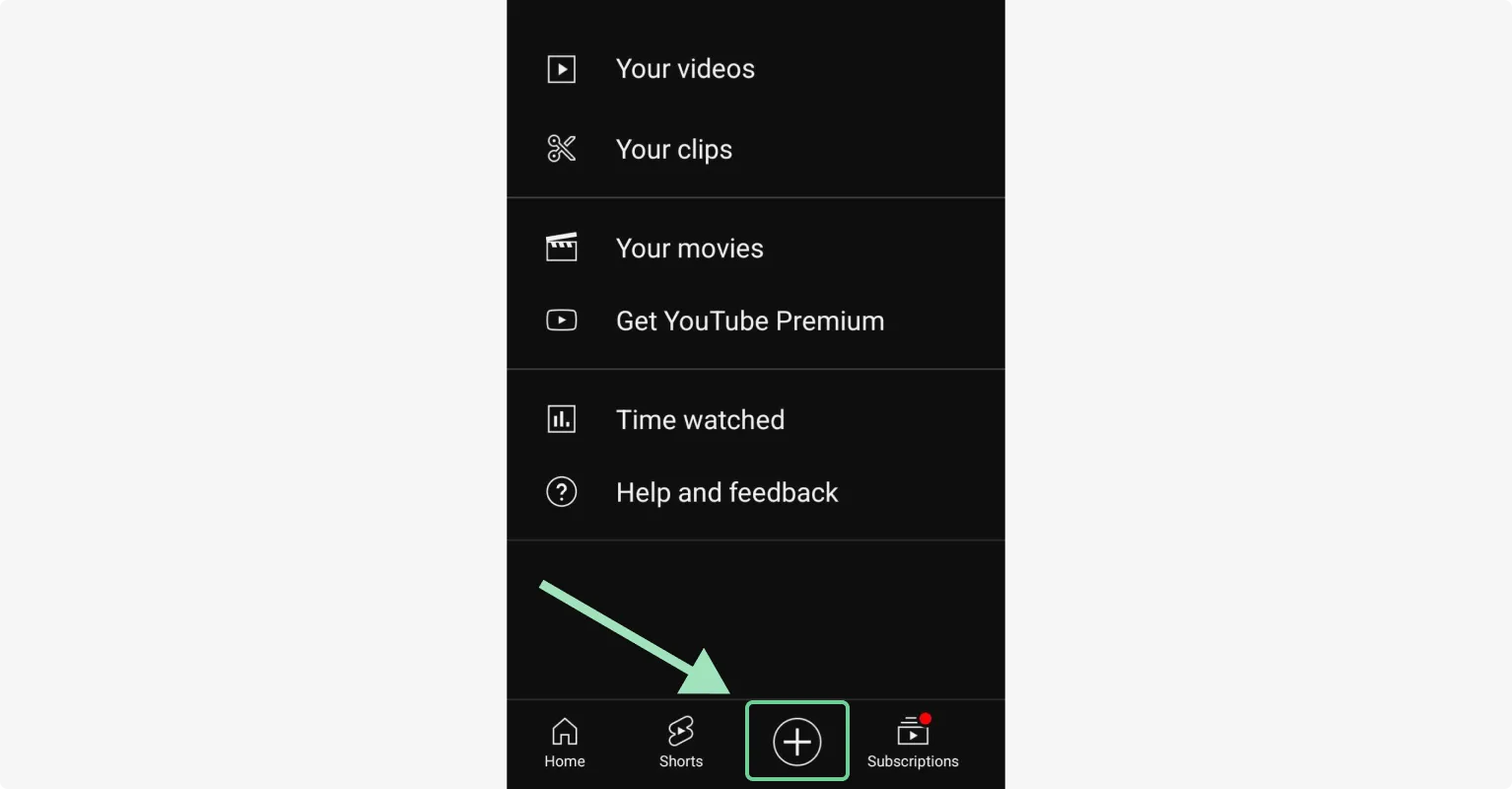
Step 3: Scroll and tap on “Live” to turn on live streaming.
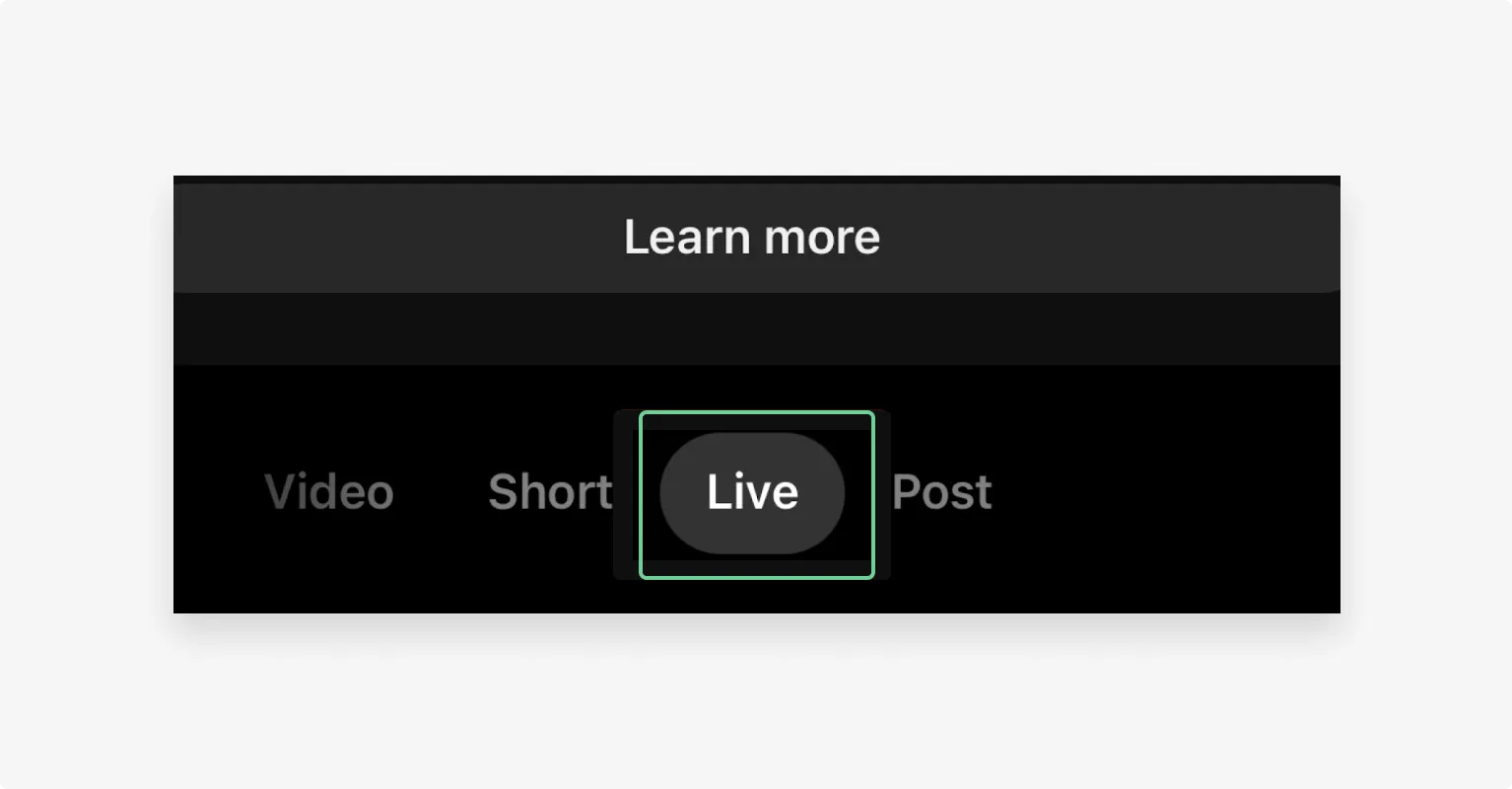
Once you enable live streaming, it can take up to 24 hours before you can stream. So, hang tight and be patient.
Step 2: Choose a Stream Type
Once you've enabled live streaming on YouTube, choose how you want to go live: from your mobile, encoder, or computer.
How to Go Live on YouTube from a Mobile Device
Step 1: Open YouTube on your device, and tap the “+” button at the bottom center.
Step 2: Scroll and tap “Live”. If it’s your first time, you’ll need to grant access to your camera, microphone, and storage. Just tap “Open Settings” to do this.

Step 3: Click the “pencil” icon.
Step 4: Enter your stream title and description. Choose your visibility settings (public, unlisted, or private). You can also set age restrictions and specify if your content is made for kids.

Step 5: Next, tap “Advanced Settings” to adjust options like live chat and reactions. Tap “Next”.
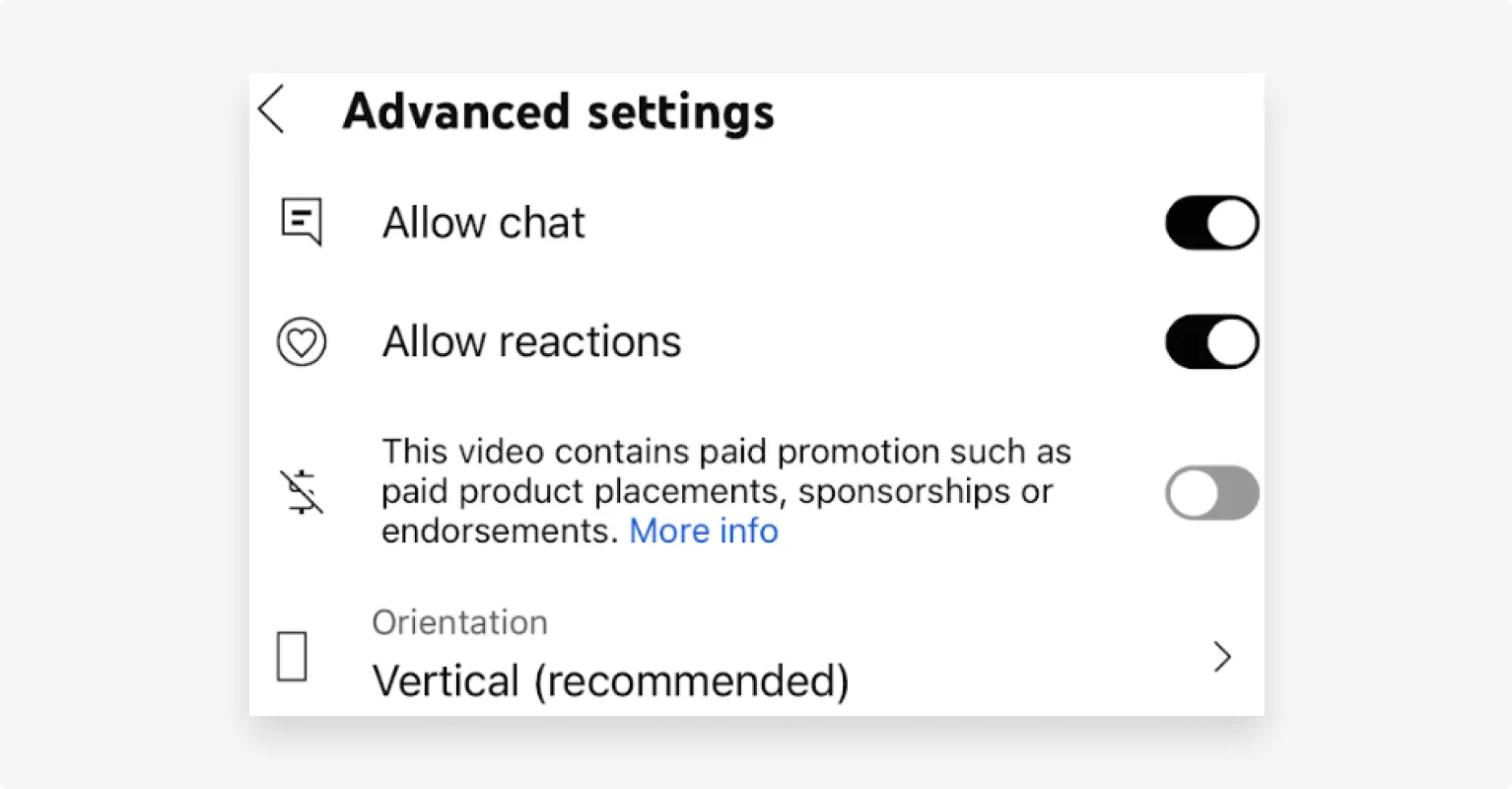
Step 6: Click the “pencil” icon to change the thumbnail. You can capture a new picture or upload a custom thumbnail.
Step 7: Tap “Go Live” to start your live stream.
When you want to end the stream, tap “Finish.” An archive of the stream will be created on your channel, which you can edit or unlist later if needed.
How to Go Live on YouTube with Streaming Software/Encoder
There are many clear advantages of using streaming software or encoder platforms like Riverside instead of streaming directly through your browser.
For instance, your stream looks and sounds professional, thanks to the higher-quality video and audio. You can also customize and tweak your stream settings for better performance. Additionally, if you're an encoder, you can handle larger, more complex streams without the risk of crashing.
Plus, you get more premium features compared to other platforms. Think: 4K video recording, automatic transcriptions, and shared team workspaces. This advanced feature set, combined with superior ease of use, allows you to focus on what's most important: making stunning content.
Ultimately, you get a smoother, more reliable live streaming experience.
Here's how to live stream with Riverside:
Step 1: Log in to your Riverside account.
Step 2: In the ☰ menu on the left, hover over “Studio” and click the “•••” (three dots). Then, click “Go to Studio.”
Step 3: On the Lobby page, check your equipment and enter your details. Click “Join Studio.”
Step 4: At the top of the Studio, click “Live stream off.” Then, under Stream to social, click the YouTube icon to open the Connect your YouTube account pop-up.
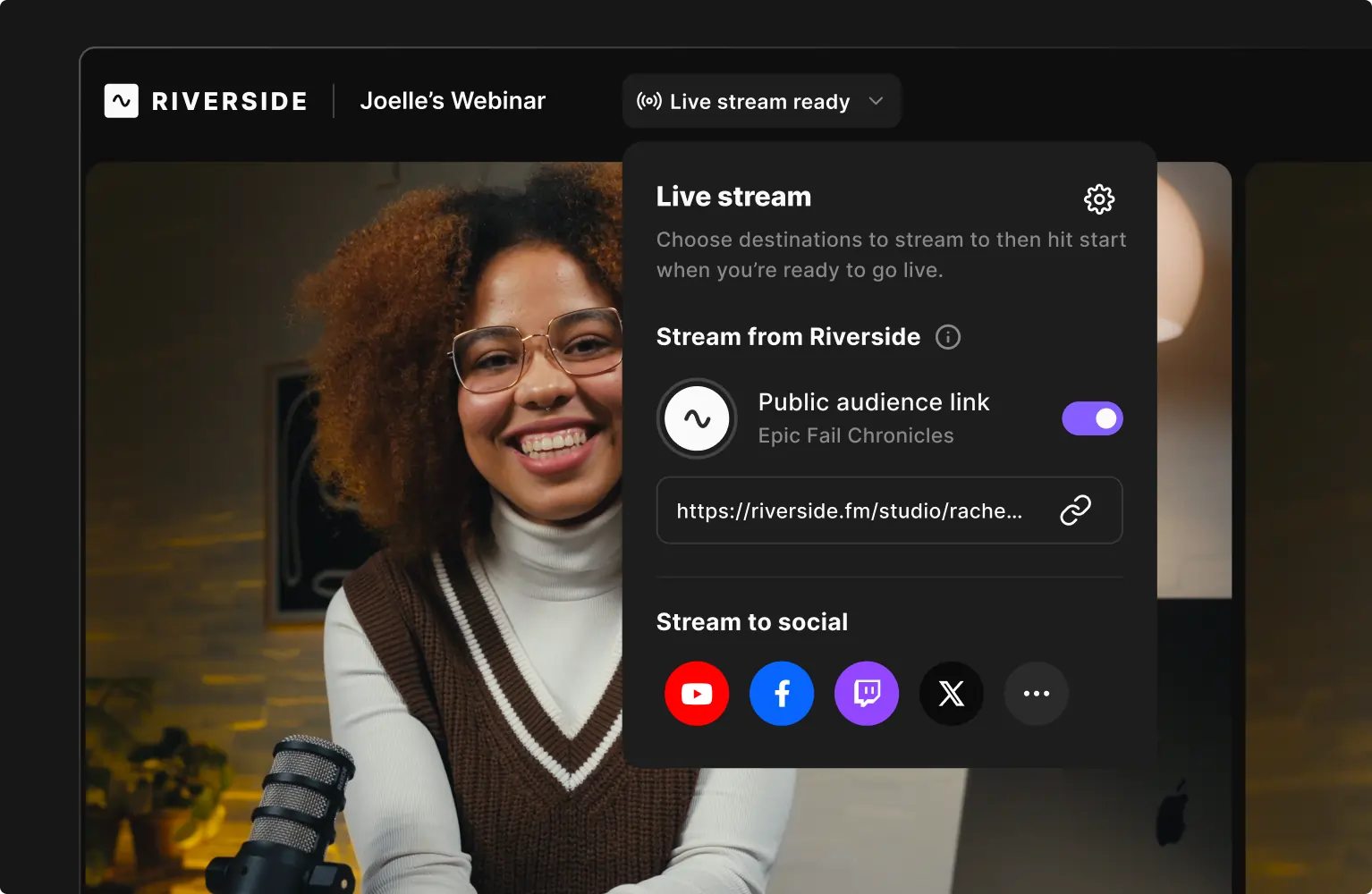
Step 5: Log in to your YouTube account to retrieve the Stream URL and Stream Key.
To get a Stream URL and Stream Key:
- Click on “Create” on the homepage. Then choose “Go Live” and set up your stream.
- Go to “Stream” in the menu on the left. Under Stream key, select “Default stream key (RTMP, Variable).”
Here you’ll see your Stream key and URL
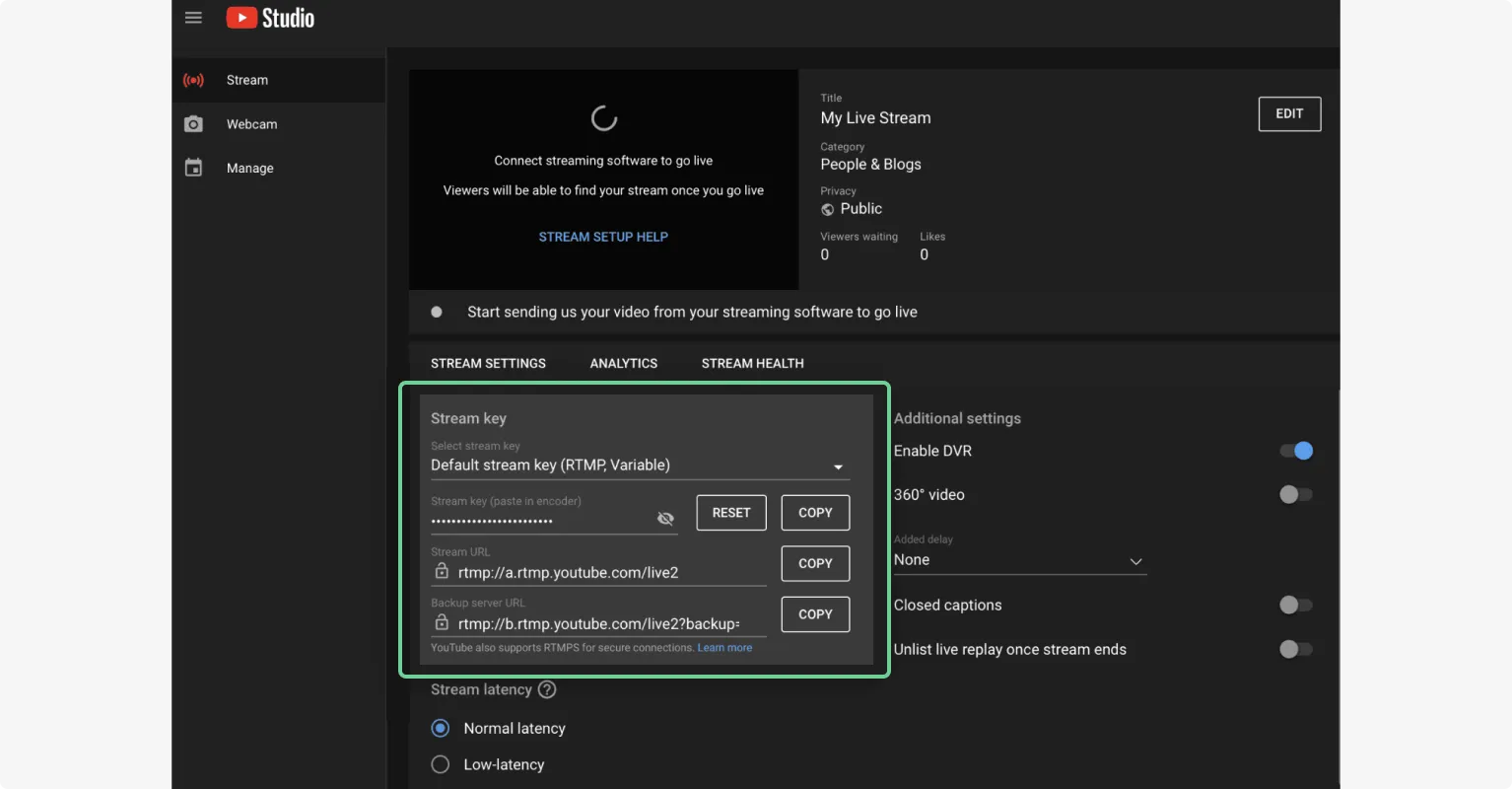
Step 6: Copy the Stream Key on YouTube and paste it in the “Stream Key” field on Riverside.
Do the same for the Stream URL. Copy the Stream URL from YouTube and paste it into the “Stream URL” field on Riverside.

Step 7: Add the relevant live stream social media post details in the Riverside Studio.
Step 8: Click “Go live” to start the live stream feed.
Your live stream will begin as soon as you start recording in the Riverside studio. Once you stop recording, the stream will disconnect from any connected services.
For more information and additional help, visit riverside.fm/support.
How to Go Live on YouTube with a Webcam
Step 1: Open YouTube on your web browser and log in.
Step 2: Click the “Create” icon, and then “Go Live.”
Step 3: Choose “Webcam” from the available streaming methods.
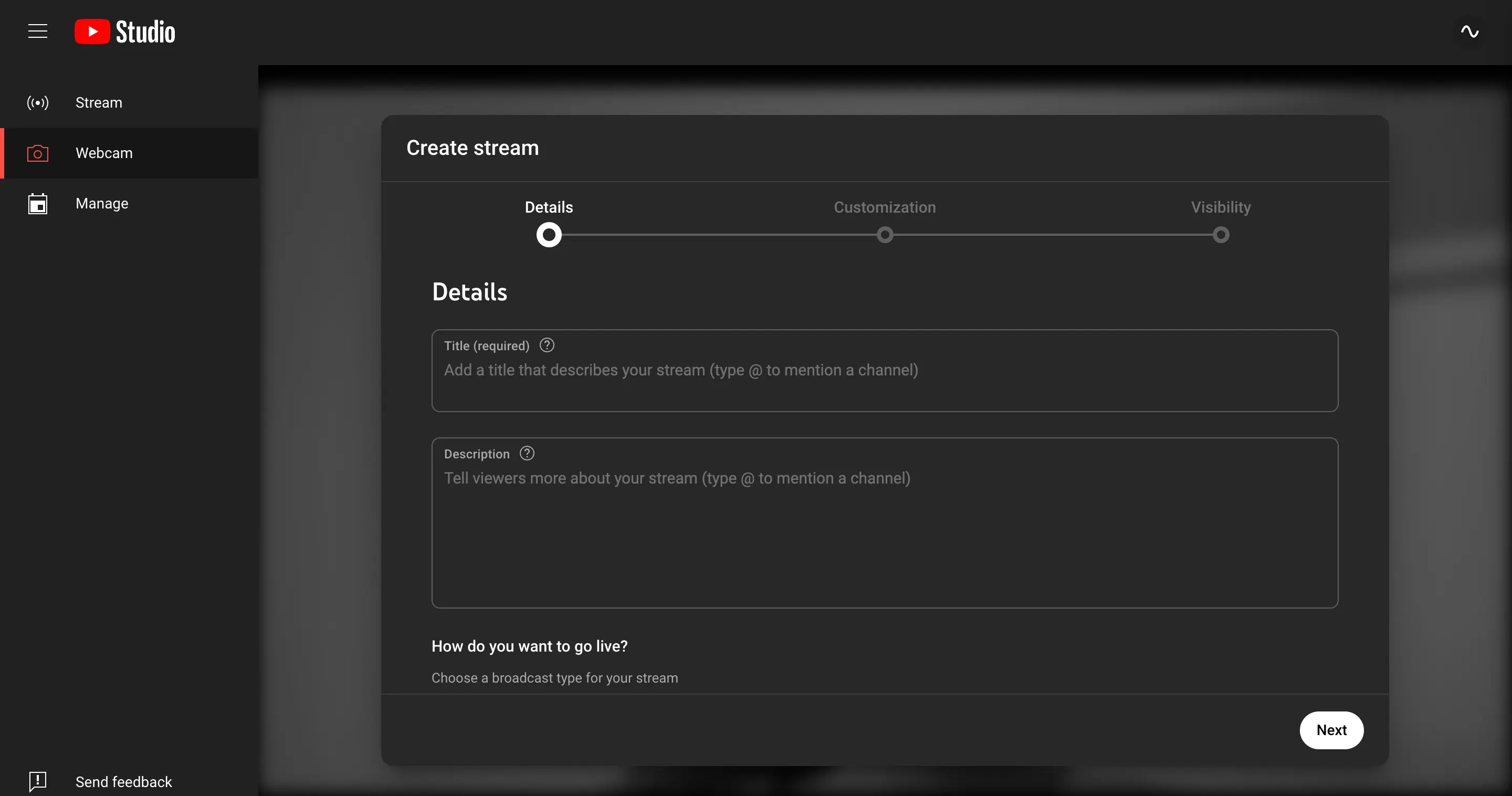
Step 4: Fill in your stream title, description, and privacy settings. Click “Next.”

Step 5: Adjust the customization options as you prefer. Click “Next.”
Step 6: Choose your desired stream visibility. You can also schedule the live stream for a later date. Click “Done.”.
Your webcam will automatically take a photo for the thumbnail. You can retake it or upload an image.
Step 7: Once set up, click “Go Live.”
Step 3: Create live stream Metadata
Optimizing your YouTube live stream's metadata helps with visibility and engagement.
Here’s how to make your title, description, thumbnail, and CTAs shine:
Title
Keep it short and snappy. Use keywords to make it searchable, and add some flair with action words or questions.
For example, instead of "Live Stream," try "Live Q&A: Get Your Questions Answered!" or "Live Q&A with [Your Name]: Ask Me Anything!"
Description
Include relevant keywords for SEO and detail what your live stream will cover, mentioning any guests or topics. Add links to your social media and related content, and encourage viewers to like, subscribe, and share.
Like this:
"Join me for a live Q&A on [topic]. Whether you're new or experienced, there's something for everyone. Don't forget to subscribe and hit the notification bell!
Follow me on social media:
Twitter: [link]
Instagram: [link]"
Use Riverside.fm's AI-powered Show Notes to automate producing SEO-optimized live streaming descriptions.
Thumbnail Image
Use high-quality images that are visually appealing. Add bold title overlays to highlight the main topic, ensure it stands out with contrasting colors, and include faces to attract clicks.
For example:
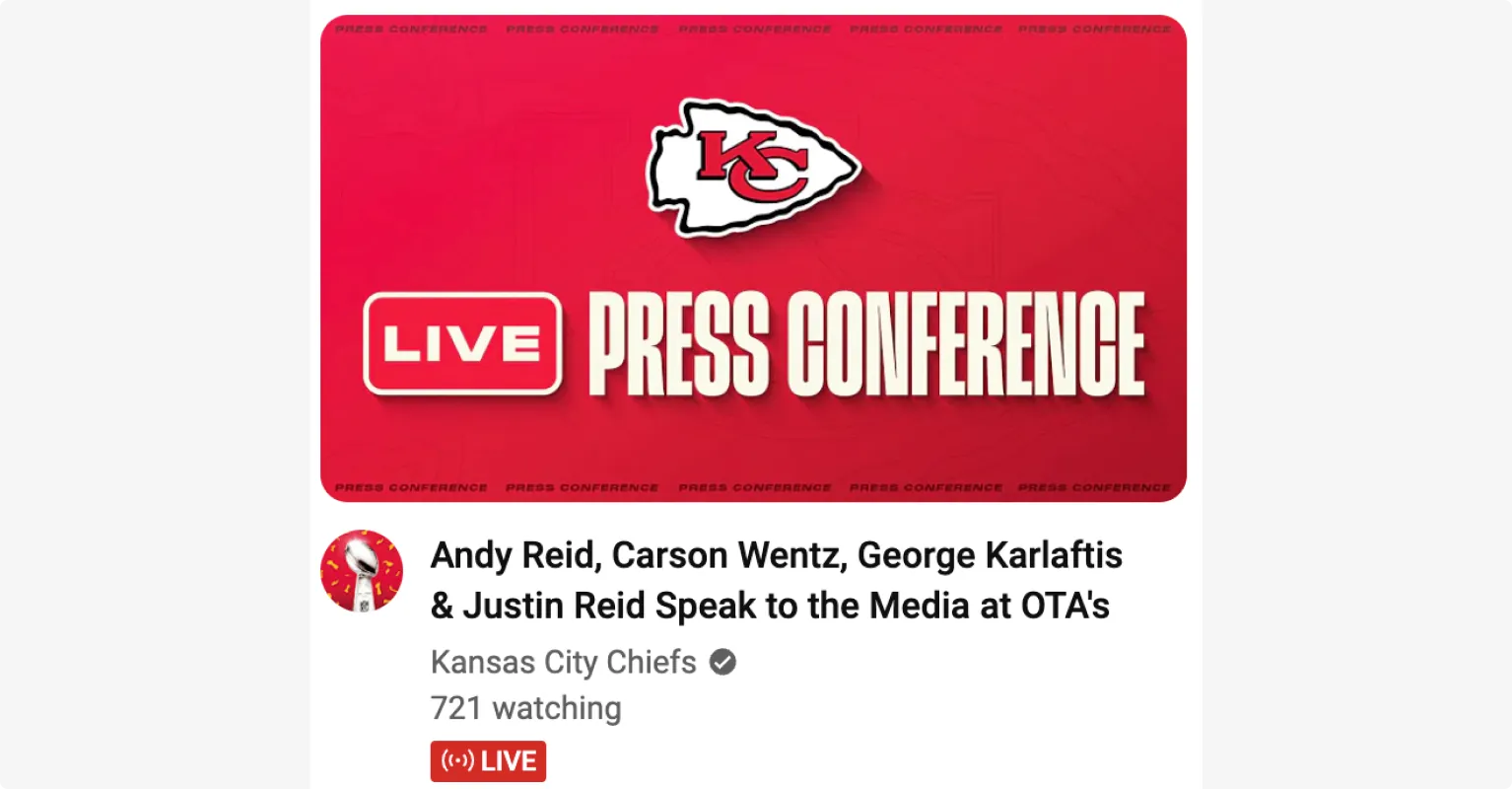
Call-to-action
Be clear and direct about what you want viewers to do. Use action words like "Join," "Watch," and "Share" to prompt immediate action. Place your main CTA early in the description and mention it during the live stream. For example, "Subscribe for more live Q&As!" or "Like this stream if you’re enjoying it!"
Use this CTA formula: Action Word + Desired Action
Important: Prioritize and Implement YouTube SEO
YouTube SEO helps more viewers discover your live stream.
How? When you use the right keywords in the title, description, and tags, YouTube can better categorize your content and show it to the right audience. This leads to more engagement (likes, comments, shares), which then boosts your video's visibility in search results and recommendations.
Even well-optimized thumbnails and readable text have roles to play—they make your content look great on mobile devices, attracting even more viewers.
Step 4: Set live stream Settings
Getting your live stream settings just right makes your broadcast smooth and fun.
Here’s how to go about this:
Setting Visibility
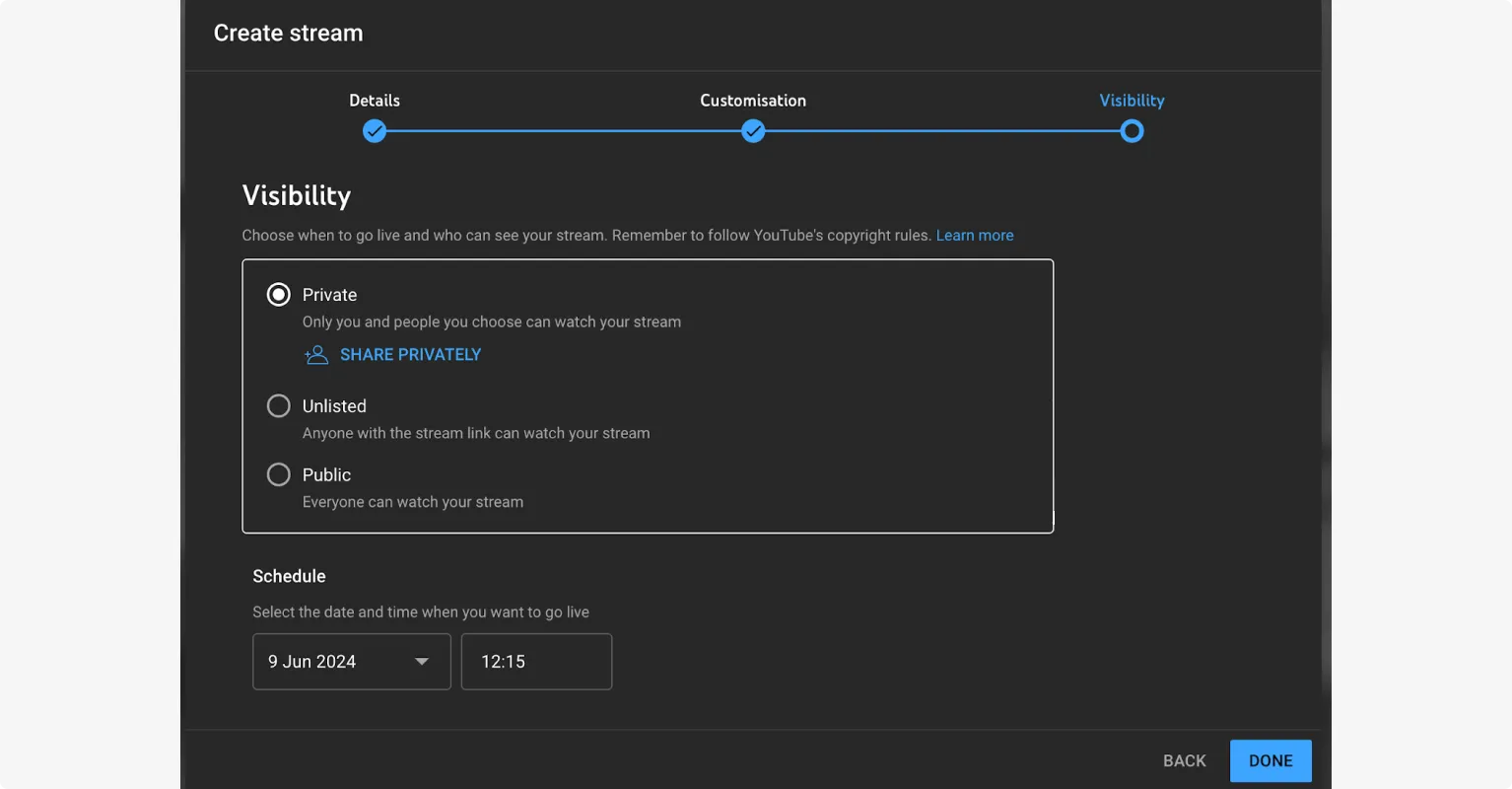
Your visibility options include Public, Private, and Unlisted.
- Public: Anyone can find and view your live stream. Ideal for reaching the widest audience.
- Private: Only you and the people you invite can view the live stream. Perfect for testing or private events.
- Unlisted: Only people with the link can view the live stream. Recommended for exclusive content or limited audience.
To set visibility:
Step 1: In YouTube Studio, go to the Details section of your live stream.
Step 2: Choose your desired visibility setting on the right: Public, Private, or Unlisted.
Step 3: Select “Save.”
Customizing Chat Settings
Enabling Live Chat lets viewers interact with you during the stream. You also have the following options:
- Slow Mode: Limits how often viewers can post messages.
- Moderate Chat: Let’s you assign moderators to manage the chat.
To customize chat settings:
Step 1: In the YouTube Studio, go to Live Chat settings.
Step 2: Toggle “Enable live chat” to allow interaction.
Step 3: Enable “Slow mode” if needed, and set the time between messages.
Step 4: You can also assign moderators by entering their usernames.
Enabling Monetization
YouTube lets you monetize your live stream. You have three options:
- Show ads during your live stream.
- Allow viewers to purchase Super Chat messages and Super Stickers. Note: Super Chat and Super Stickers help fans connect with creators during live streams and Premieres. Viewers can buy Super Chats to highlight their messages or Super Stickers for fun animated images in the live chat.
- Offer channel memberships for a recurring fee.
To enable monetization:
Step 1: In YouTube Studio, go to the Monetization tab.
Step 2: Toggle on “Monetize with ads” if applicable.
Step 3: Enable “Super Chat” and “Super Stickers” if available.
Step 4: Set up “Channel Memberships” if your channel is eligible.
Adding Tags and Descriptions
Tags and descriptions help YouTube categorize and recommend your live stream. Use relevant keywords in your tags and provide a detailed summary in the description. Be sure to include key topics and important links.
To add tags and descriptions:
Step 1: In the Details section of your live stream in YouTube Studio, enter your tags in the Tags field.
Step 2: Write a comprehensive description in the Description box.
Step 3: Include keywords and links to related content or social media.
Step 5: Test Your Setup
Before going live, make sure to dot your i's and cross your t's.
Test your live stream equipment and setup to ensure everything is running smoothly. This includes:
Upload Speed
Check your internet connection to ensure stable and sufficient upload speed. Aim for at least 3-6 Mbps for standard HD streaming. You can use tools like Speedtest.net to measure the speed.
Connectivity
Make sure all your equipment is properly connected and working. Check your camera, microphone, and any other peripherals. Your streaming software or encoder should be correctly set up and linked to your YouTube account.
Script
If you’re following a script, review it thoroughly. Practice your delivery for a natural flow. Ensure all key points are covered and that any interactive elements (like Q&A sessions) are well-planned.
Check out Riverside's Teleprompter. Use it to create all your notes, points, questions, and scripts directly in the studio for easy access when you need them.
Additional Things to Watch Out For
- Audio Quality: Ensure your microphone captures clear audio without background noise.
- Lighting: Check that your lighting setup provides good visibility and reduces shadows.
- Backup Plans: Have a backup plan in case of technical difficulties. For example, having another device ready or knowing how to quickly restart your stream.
Here's the thing:
Even the best-prepared streams can encounter hiccups, like camera malfunctions, going off script, or unexpected interruptions.
A famous example is a BBC correspondent's children interrupting a live broadcast, which went viral and brought a lot of laugh.
You should be prepared for unexpected interruptions. Handle them gracefully, and continue having fun. Remember, mistakes are okay!
Step 6: Start live streaming
Next comes the main part—the actual live stream.
As mentioned before, you have three options:
- Mobile: Great for vlogging or quick updates on the go.
- Encoder: Ideal for gaming, concerts, business events, podcasts, and interactive presentations. Use this if you want to share your screen or use multiple cameras and microphones.
- Webcam: Perfect for simple streams, like a quick Q&A or sharing your thoughts.
Pick one, and simply follow the instructions we outlined in Step 2.
Step 7: Analyze Results
Why analyze your live streams? It'll help you understand what's working and what needs to improve.
Key Metrics to Track
- View Count: How many viewers tuned in? This indicates your reach and audience size.
- Watch Time: The total watch time. Higher watch times mean your content kept viewers hooked.
- Concurrent Viewers: The maximum number of viewers watching at one time. This shows which parts of your stream were the most engaging.
- Audience Retention: The point where viewers dropped off during your live stream. It pinpoints areas that might need improving.
- Engagement Metrics: Your likes, dislikes, comments, and shares. High engagement rates indicate your content resonated well with your audience.
- Chat Rate: The number of chat messages viewers sent during your live stream. A busy chat means an engaged audience.
And that's just scratching the surface. Dig deeper into YouTube's live stream metrics.
How to Analyze Results on Computer
Step 1: Click on your profile image on the right-hand side. From the drop-down menu, select “YouTube Studio.”
Step 2: From the left menu, select “Content.” On the Live tab, select a live stream.
Step 3: From the left menu, click the “Analytics” button.
Step 4: Scroll below to check your live stream's analytics.
How to Analyze Results on a Mobile Device
Step 1: Download and open the YouTube Studio App.
Step 2: From the bottom Menu, tap “Content,” followed by the “Live” tab.
Step 3: Pick a live stream, and tap “Analytics.”
Step 4: Scroll below to check the analytics.
7 Best Practices for Using YouTube Live
If you want to make a name for yourself as a video streaming creator, your content needs to stand out.
There's no magic formula for success, but these YouTube Live tips can help you attract a larger audience.
1. Prepare Your Content
Have a clear idea of what you want to accomplish with your stream before you go live.
You don't have to have everything planned out—just a general idea of what you'll talk about is enough. This way, you can deliver your message and engage better with viewers.
2. Practice Makes Perfect
Recording yourself practicing on camera is a smart move, even if you don’t have your entire script memorized.
Sure, you won't be facing live viewers. But getting comfortable in front of the camera will help you engage your audience better. Additionally, you can catch any distracting speech patterns, like saying “um” or “like” too often.
3. Promote Your live stream
To get people to watch your live stream, you need to let them know it’s happening. That's where promotion comes in.
Here are some effective promotion ideas:
- Social Media Posts: Share information about your upcoming live event on platforms like Facebook, Twitter, Instagram, and LinkedIn.
- Create a Trailer: Make a short trailer for your live stream. You can easily create one using Riverside Clips.
- YouTube Notifications: Encourage your YouTube viewers to enable notifications so they’ll be alerted when you go live.
- Schedule on YouTube: Schedule your live stream on YouTube so your subscribers can set reminders.
- Email Invitations: Send details of your stream to your email lists.
Additionally, look at how successful content creators promote their streams to find inspiration for your strategy. For instance, popular online streamer Ninja uses his social accounts to announce upcoming live streams, often sharing the schedule and a teaser of what to expect.
4. Engage Your Audience
Engage with your audience before, during, and after your live stream.
Interaction keeps viewers interested and returning. Respond in real-time to questions and comments during the live chat. Also, engage with viewers in video comments and direct messages when you're not live.
If you want to increase live stream engagement to the next level, check our guide here.
5. Use YouTube Live’s Features
YouTube Live offers built-in features to help optimize your stream, attract new viewers, and grow your audience. Here’s how you can use these features to enhance your content and gain more subscribers.
- Super Chats let viewers pay to highlight their messages during a live stream. Engage with viewers using this premium feature as they are often loyal and willing to support your channel financially.
- Live automatic captioning makes your content accessible to a broader audience. People with hearing difficulties or those who can't use sound also get to enjoy your stream when you add captions and subtitles.
6. Go Live at the Right Time
When you go live also impacts your viewer count. Know where your viewers are watching from and when they like to stream content. You can do this using YouTube analytics. Or by creating a poll to ask viewers when they’re online.
7. Be Consistent
Once you have an idea of a good time to go live, be consistent with it. You’re more likely to retain subscribers with a set streaming schedule so viewers can plan to watch your content. If you can’t stream at your regular time for any reason, be sure to inform your subscribers beforehand.
Final Thoughts
With the steps outlined in this guide, you're now well-equipped to start your own YouTube live stream and build your very own community. Do it right, and you can connect with your audience in a way that matters.
The key is to prepare thoroughly, test your setup, and analyze your results to continually improve. Don’t be afraid to experiment and find what works best for you. Remember, every great streamer started where you are now.
FAQs on How to live stream on YouTube
How is YouTube Live different from other streaming platforms?
Unlike other platforms, YouTube Live connects directly with your existing YouTube channel, reaching your subscribers without any extra steps.
Your live streams are easily discoverable through YouTube's powerful search engine. Since the platform has over 2 billion active users, you can also reach a large audience.
Plus, you can make money through channel memberships and ads, and get detailed insights into your audience with YouTube's analytics.
What are the benefits of YouTube Live?
YouTube Live boosts audience engagement and community building. It offers various monetization options and lets you host exclusive events. Plus, a large number of social video viewers love watching live streams.
Why can’t I go live on YouTube?
You might not be able to go live on YouTube if your account isn’t verified or if there are live streaming restrictions due to community guideline violations. Insufficient subscribers for mobile streaming is another issue.
How many subscribers do you need to live stream on YouTube?
You need at least 50 subscribers to go live from a mobile device. There’s no subscriber requirement for streaming via webcam or encoder.
Which is the best streaming software for YouTube?
There are plenty of options, but Riverside makes one of the best streaming software for YouTube. Of course, you should consider your needs and preferences and accordingly make a choice.
Is YouTube live streaming free?
Yes, YouTube live streaming is free.
How do I live stream a Zoom meeting on YouTube?
To live stream a Zoom meeting on YouTube, enable live streaming in Zoom settings and start your Zoom meeting as the host. Then, click “More,” followed by “Live on YouTube,” and follow the prompts to connect and “Go Live.”


.webp)











-(1).webp)

.webp)


